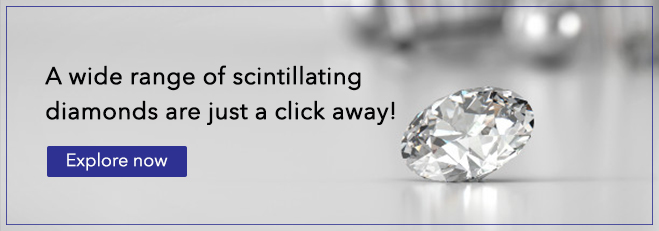Decoding Beauty: Pear Diamond cut – The love child of brilliant round & marquise-cut diamonds
Posted by Hari Krishna
April 28, 2021
The first modern pear cut diamond was created in 1458 by Flemish cutter Lodewyk van Berquem of Bruges, founder of the diamond-polishing wheel aka scaife.
Yes, getting inspired by the old pendeloque cut & Briolette cut, Lodewyk invented a modern pear diamond-cut that exhibits maximum light return and sparkle.
A modern pear diamond cut, resembling a teardrop shape, is the perfect combination of brilliant round and marquise diamond shapes.
An exquisite pear diamond is indeed a beauty with its narrow pointed top and perfectly rounded bottom. They can be either slender & long or plump & shorter.
The pear diamond-cut is one of the only two asymmetrical diamond shapes (the other being the Heart-cut) that are beautiful, elegant, and relatively rare, besides their asymmetry.
Pear is indeed the brilliant diamond-cut, meaning the crown of pear-cut diamonds consists of triangular and kite-shaped facets.
However, they might cost less than the brilliant round diamonds due to their lower demand.
Showed up on some of the most photographed fingers in recent years, pear diamond-cut has become very popular among the masses.
But before you buy one for yourself, keep certain crucial things in mind, which we are going to discuss in the following segments of the article. Ready to bite?
Let us go:
Before going further with cut parameters, let us introduce some technical terms related to per diamond cut.
A pear diamond has gently rounded shoulders and wings, which form attractive arches. If they are too flat, the pear shape looks narrow. If they are too rounded, the pear shape looks stubby.
Like any other fancy diamond cuts, symmetry in pear cuts is inevitable. The shoulders, bellies, and wings in the two imaginary vertical halves of the pear cut should be identical.
Uneven/high shoulders, bulged/flat wings, undefined points, or any other variations will detract from the appearance of pear-cut diamonds.
Sometimes, pear diamonds are cut with a French tip (used in heart & marquise diamond cuts). It replaces the bezel facet at the point with star and upper girdle facets.
Furthermore, two main things to look after when buying a pear cut diamond are – Pear Ratio and the Bow-tie effect.
Let us see them in detail:
The pear ratio of a pear-cut diamond is nothing but its length-to-width ratio. The narrower & elongated pear shape has a high pear ratio than the wider & rounded pear shape.
Popularly, pear diamonds come in three pear ratio ranges: 1.30, 1.50, and 1.70. However, the optimal pear ratio is usually somewhere between 1.45 and 1.55.
Because going under 1.45 pear ratio will make your diamond look chubby and counteract its sparkle. And going beyond the 1.60 pear ratio will make your diamond look too skinny and long.
Just like oval, marquise, and heart-shaped diamonds, pear-cut diamonds show a bow-tie effect when light passing through the diamond casts a shadow across the central facets of the stone.
Many pear diamonds show an intense dark bow-tie effect running across the diamond width from the center of the table.
Unfortunately, no gem-cutter can ever eliminate the bow-tie effect in these diamond cuts but can certainly make it less pronounced.
The bow-tie on a well-cut pear diamond will be minimal, but there will still be good contrast between light and dark patterns in the diamond.
However, the bow-tie effect in pear diamonds can be minimized by keeping their cut characteristics within the following ranges:
Most importantly, the intensity of the bow-tie effect in pear diamonds is attributed to its cut quality and cannot be judged based on a grading certificate alone.
It means that without analyzing the diamond visually, it is hard to tell how intense the bow-tie effect they will show.
Well, you can wear your favorite pear diamond in any jewellery setting you want.
However, that setting should protect the vulnerable parts (like the pointed tip) of the pear diamond while showing off the unique beauty of the pear diamond.
From the durability point of view, the tapered solitaire setting and intricate halo setting are the best-suited jewellery settings for pear diamonds.
Also, the pointed tip of the pear diamond can be protected by the V-prong in five-prong jewellery settings.
Choosing a bezel setting around the entire pear diamond can give more safety to the diamond but does not show as much sparkle as the prongs settings.
Among all the fancy diamond cuts, a pear-cut diamond conveys both the delicacy of a single tear and the strength of the brightest star.
Another important reason why pear diamonds are more impressive than any other traditional diamond cut is that they appear big in the same carat sizes.
The pear diamond cut exists for centuries making it the royal vintage classic diamond shape that is timeless and priceless, even today.
As we have already touched on, it is difficult to find a high-quality pear-cut diamond. But with HK, you can find scintillating pear cut diamonds through your fingertip.
